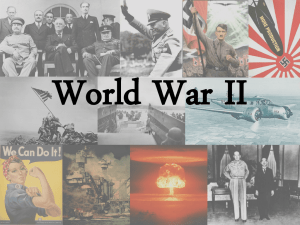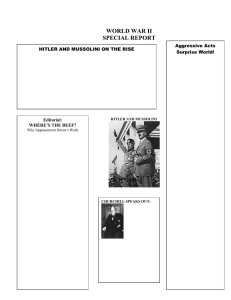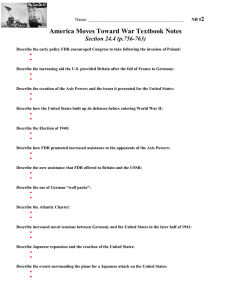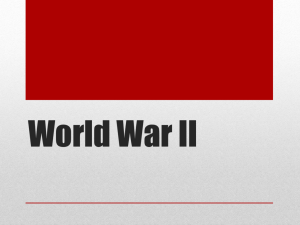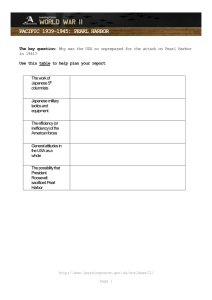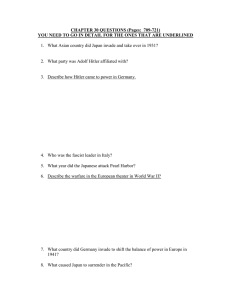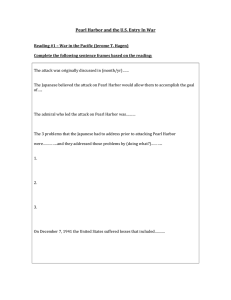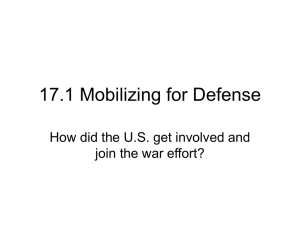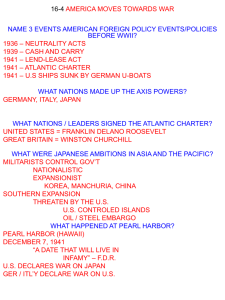APUSH Reading Guide: Chapter 34 Thought Provokers: Complete
advertisement
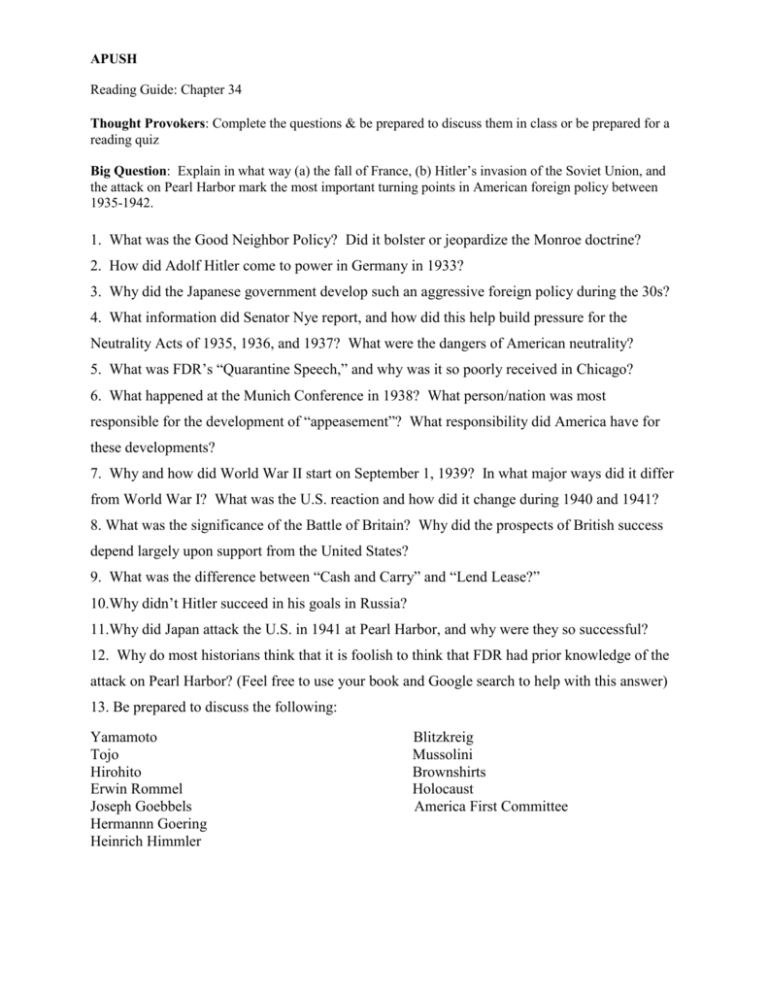
APUSH Reading Guide: Chapter 34 Thought Provokers: Complete the questions & be prepared to discuss them in class or be prepared for a reading quiz Big Question: Explain in what way (a) the fall of France, (b) Hitler’s invasion of the Soviet Union, and the attack on Pearl Harbor mark the most important turning points in American foreign policy between 1935-1942. 1. What was the Good Neighbor Policy? Did it bolster or jeopardize the Monroe doctrine? 2. How did Adolf Hitler come to power in Germany in 1933? 3. Why did the Japanese government develop such an aggressive foreign policy during the 30s? 4. What information did Senator Nye report, and how did this help build pressure for the Neutrality Acts of 1935, 1936, and 1937? What were the dangers of American neutrality? 5. What was FDR’s “Quarantine Speech,” and why was it so poorly received in Chicago? 6. What happened at the Munich Conference in 1938? What person/nation was most responsible for the development of “appeasement”? What responsibility did America have for these developments? 7. Why and how did World War II start on September 1, 1939? In what major ways did it differ from World War I? What was the U.S. reaction and how did it change during 1940 and 1941? 8. What was the significance of the Battle of Britain? Why did the prospects of British success depend largely upon support from the United States? 9. What was the difference between “Cash and Carry” and “Lend Lease?” 10.Why didn’t Hitler succeed in his goals in Russia? 11.Why did Japan attack the U.S. in 1941 at Pearl Harbor, and why were they so successful? 12. Why do most historians think that it is foolish to think that FDR had prior knowledge of the attack on Pearl Harbor? (Feel free to use your book and Google search to help with this answer) 13. Be prepared to discuss the following: Yamamoto Tojo Hirohito Erwin Rommel Joseph Goebbels Hermannn Goering Heinrich Himmler Blitzkreig Mussolini Brownshirts Holocaust America First Committee
